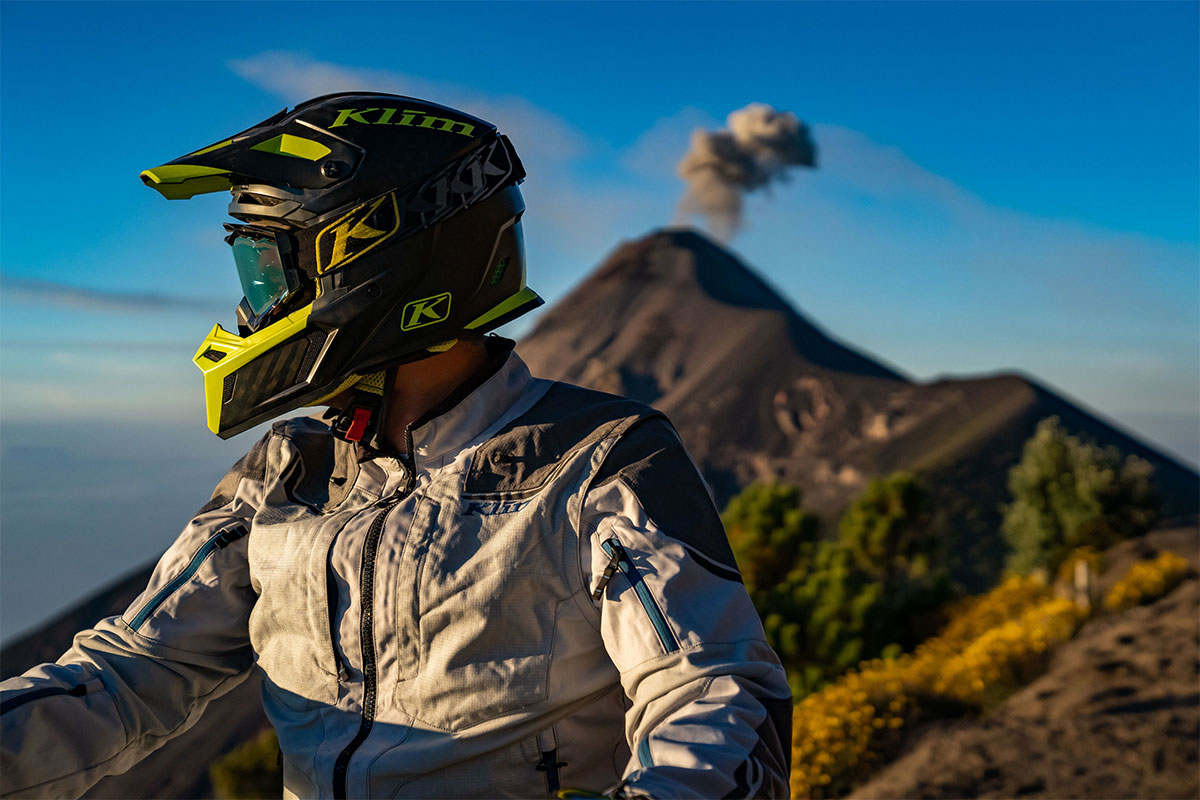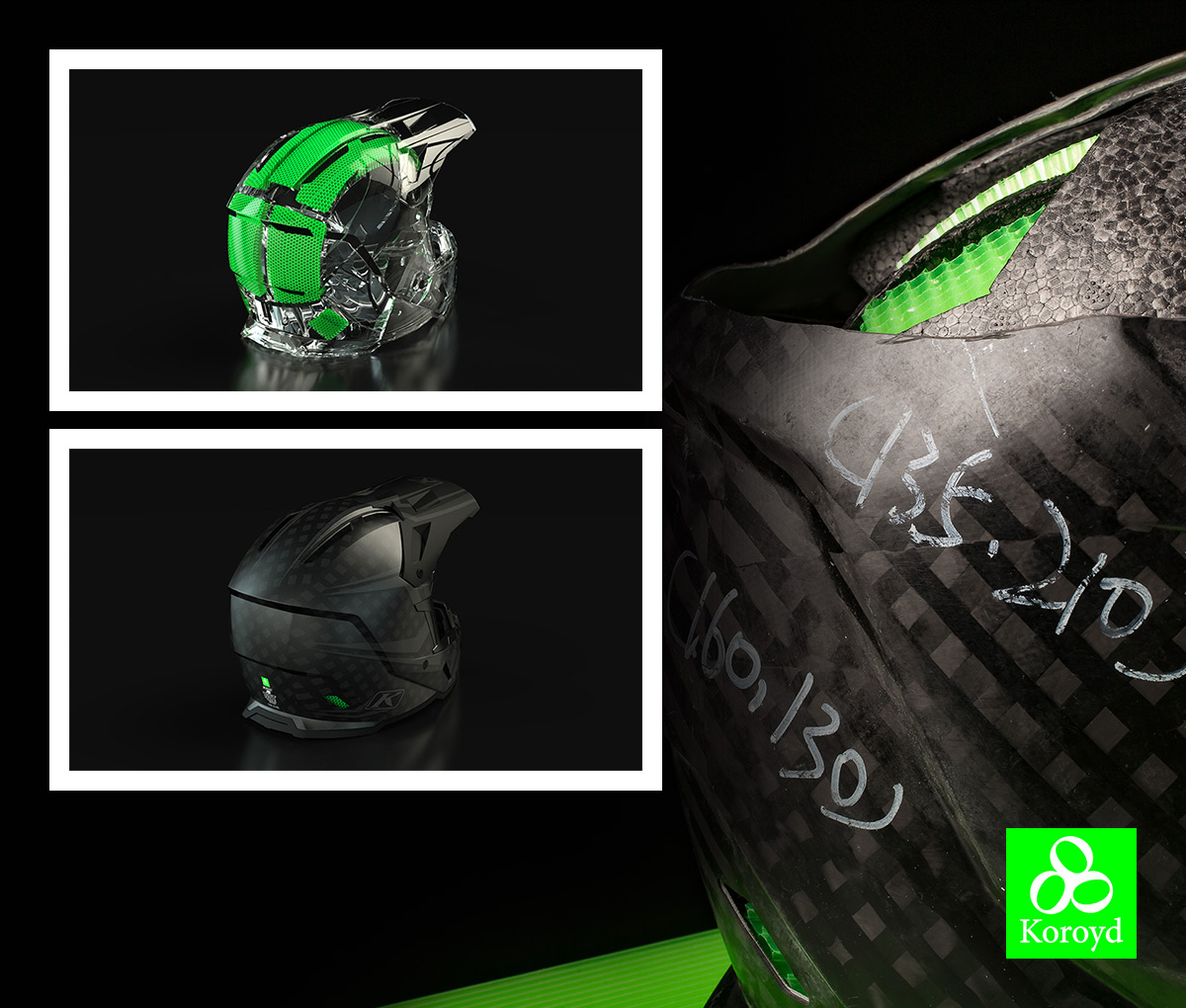Can MIPS Helmet Technology Protect Your Head Better?
Author: Team Adventure Moto Date Posted:15 July 2019
Helmet manufacturers are constantly coming up with new designs, technologies, and fabrics to improve our safety on (and off!) the road. And that’s good news: the safer we are, the better, faster, and further we can ride and enjoy our two-wheeled shenanigans. But sometimes, it can be difficult to distinguish between a slick marketing headline and the real deal: are all those new improvements really making a difference?
MIPS technology is now all the rage among helmet companies. It stands for Multi-directional Impact Protection System, and has already become an integral part in helmets designed for skiing, skating, cycling, and other action sports.
Now, MIPS is making its way into motorcycle crash helmets. Not all manufacturers have embraced it yet, but those that have, like Klim, seem to be swearing by it and are unlikely to go back.
So what is MIPS exactly, and more importantly, can it make your ride safer?
The History of MIPS
Unlike many other motorcycle helmet features, MIPS was not developed by a helmet manufacturer. Instead, it was created by a team of brain surgeons and scientists.
MIPS, or Multi-directional Impact Protection System, is based on a simple fact that people who engage in action sports rarely hit their heads straight on, as if dropped vertically. Most of the time, the impact is rotational, and it is that rotational movement during a crash that does the most damage.
According to a Swedish neurosurgeon Hans Van Holst’s research, a rotational impact causes the brain to move inside the skull, often resulting in severe injury. It’s this movement of the brain rather than the impact itself that’s the problem.
After treating countless patients with severe head traumas, even though they were wearing crash helmets, Van Holst teamed up with a colleague, Peter Hallden, to develop a new helmet technology that would prevent this type of injury. After decades of rigorous research, the scientists came up with new, improved test methods which allowed them to develop MIPS – an integrated helmet system that would effectively prevent the rotational forces from injuring the brain.
How MIPS Works
The interesting thing about MIPS is that unlike many other helmet features, it was developed to mimic our natural biology. Our brain is naturally protected from impact by a cushion of cerebral fluid situated between the brain and the skull. It’s this cerebral fluid that allows for slight motion inside our heads, thus preventing the impact force from injuring our precious grey matter.
Imitating this natural system, MIPS works in a similar way: built using several soft slip-planes, MIPS layers allow for a slight movement of the helmet, which in turn prevents the rotational forces from impacting our brain.
In other words, the moving MIPS layers inside a helmet do what our cerebral fluid does: disperses the force of a rotational impact by allowing for minimal movement. According to ample research data, real-life case studies and extensive tests, this helps significantly reduce or even prevent severe brain trauma. MIPS can make all the difference between getting a mild concussion and suffering irreparable brain damage.
MIPS helmets are tested differently and much more thoroughly. Most regular helmet tests involve dropping the helmet vertically on a flat surface with varying force. However, this is rarely what happens during a crash: most of the time, we experience not just static or vertical, but also rotational impact or, more commonly, both.
With this in mind, MIPS helmets are additionally tested using a “sliding sledge method”, where the helmet is dropped on a rapidly moving metal plane to mimic real-life collision. The second test involves an “anvil method” where the helmet is dropped vertically on an angled surface, again to test for crashes at an angle which occur much more frequently.
Because of its significantly improved ability to prevent brain trauma, MIPS technology has been incorporated into most bicycle, ski, equestrian, and other action sports helmets since 2008. In motorsports, motocross helmet manufacturers were among the first ones to start using MIPS in their crash helmet design.
Why Now?
Although MIPS was developed almost a couple of decades ago and quite a few motorcycle helmet manufacturers already offer helmets with MIPS technology, most are only starting to use it now. This is because while it’s easier to develop new designs, the safety technologies require more time, investment, and rigorous testing before they become standard or mainstream.
A few motorcycle helmet manufacturers, such as Airoh and Fox, have already embraced MIPS and offer a variety of motocross helmets with this technology. You may even already own one – MIPS slip-planes do not add much in terms of bulk or weight inside the helmet!
The newest and most impressive improvement in helmet safety, however, was made by Klim when they came out with their brand new Klim F5 Koroyd helmet. This incredibly lightweight carbon fiber helmet combines the extra protection of MIPS technology and a layer of welded koroyd tubes designed to absorb the impact of a crash in a much safer way.
According to Klim, the F5 Koroyd is the most advanced motorcycle helmet they have designed and manufactured so far.
Should You Get One of Those?
Judging by the overwhelming amount of solid, consistent scientific research and data, numerous case studies, and positive feedback, it seems that MIPS technology is here to stay. Right now, only a few motorcycle helmet manufacturers are offering head protection with MIPS, but it appears it’s only a question of time before this technology may become a standard safety issue in all motorcycle helmets – and for good reason.
Whether you should buy a helmet with integrated MIPS technology or not is entirely up to you. If you’ve recently purchased a new helmet, shelling out another chunk of cash for a lid with MIPS technology might sound a little much. On the other hand, a crash helmet featuring the newest, most advanced protection technology does sound like a perfect Christmas for yourself, your pillion passenger, or your riding buddy!



















